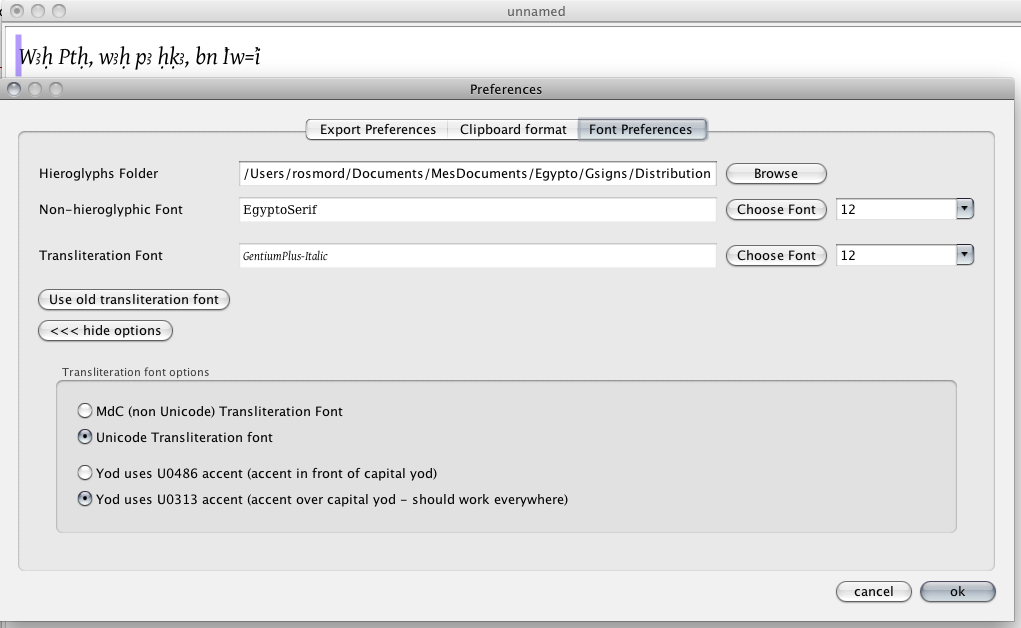
Jsesh help windows#
If you still have a number of fonts available, but certain ones such as Meiryo are missing, then that can be because a number of international fonts were moved into optional features in Windows 10.įor instance, the Meiyro font was developed to support Japanese. If the latter, then you may be hitting the issue discussed here: A topic I hope to return to fairly soon.Are you just missing certain fonts, or are all your fonts missing? Each font can take its own approach to sign placement. The most important consideration related to this process is that new Unicode fonts define sign placement in the font itself (allowing the user to work in many generic applications from Word Processors to Web Browsers). I find it useful to help spot JSesh transcription errors.Ī related topic is conversion between Unicode and JSesh data.

The current MdC analysis for Unicode Repertoire Extensions web app is not designed to process absolute positioning but provides an easy way to highlight absolutes and ligatures used in MdC-coded data.

Always use a preformed sign when available in the Hieroglyphica/JSesh set. For instance combine A50 ('noble') with S45 ('flagellum') instead of using the preformed A51 sign.

One pernicious use of absolute positioning I've observed is 'new signs from old'. I personally use this commenting approach with JSesh data so I know what to do if improvements appear in a later release of JSesh or I want to create generic MdC or Unicode data. Note in some MdC systems R7&bA&Z1 looks fine.+s However technically it could be written in JSesh as n:(t*t) o r n is used because R7^^^bA&Z1 default scaling of R7 is unsatisfactory (although R7\50^^^bA&Z1 is not bad). This means the golden rule is to keep a JSesh encoding as simple as possible and only use the more complex features when essential.įor instance ntt is normally written MdC n:t*t. Incorrect or inefficient transcriptions are unacceptable. Here, elements of JSesh sign placement may be unsupported, irrelevant, or misleading.
Jsesh help software#
It is possible to get away with an inelegant or incorrect transcription so long as the image looks ok although hacking solutions can prove to be fools gold so avoid where at all possible.Ī secondary, and increasingly useful, application is to use JSesh to encode hieroglyphic data in an MdC (Manuel de Codage) style format intended for processing in other software applications such as databases and other MdC-like editors. The JSesh sign placement extensions over basic MdC (Manuel de Codage) focus on this application. In common with other first generation hieroglyphic editing software, the primary purpose of JSesh is to generate images of hieroglyphic text, typically for inclusion in word processing documents as illustrations.

The note does not discuss when to use special features for sign placement so I'll give some practical guidance here. Some JSesh users may find this informative. The document sketches some aspects of how JSesh organises hieroglyphs into clusters/quadrats for rendering. A technical note by Serge Rosmorduc About JSesh 6 sign placement is now available on the JSesh website via /en/node/3112.


 0 kommentar(er)
0 kommentar(er)
